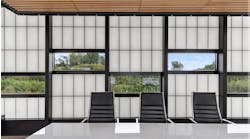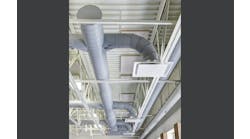By using life-cycle cost analysis, Hillsborough County (Fla.) School District saves money while often ignoring the low bid.
In the past, pre-purchasing HVAC chillers and awarding the contract to the low chiller manufacturer bidder was not uncommon. However, engineers now can evaluate those equipment bids to determine the one bid economically best for an education institution while contributing to green school construction. This method was developed in 2009 by the district's planning and construction department.
The district does significant school renovation during the two-month summer break. With a short construction time, it must have all "long-lead" equipment delivered directly to schools prior to the students and staff leaving and the contractor starting work. Without pre-purchasing, the contractor will wait at least 8 to10 weeks. The objective is to make major renovations carefully and quickly so students and staff have a seamless transition when they return to school.
The district advertises for competitive chiller bids based on the construction documents and the uniform chiller specifications. The identical/uniform chiller spec (see diagram above) is given to each engineer. The spec includes the standard and optional features. The only thing needed from the engineer is the chiller's minimum tonnage, water flow, electrical service, etc. Then, the engineer signs and seals the specification as his or her own. This happens before a contractor is chosen.
Chillers are expensive, and they can present operational problems if not maintained continually and kept clean. This method simplifies those measures so that the district can have chillers that consume little electricity and require minimal maintenance.
The chiller bid forms include:
The district does a life-cycle cost analysis by amortizing the manufacturer's annual warranty costs (at 7 percent interest compounded annually) with an equal series present-worth factor. Then the district amortizes the HVAC's first-year energy cost (at 6 percent interest compounded annually) with an equal series compound amount factor "x" single-payment present-worth factor. The chiller's bid price then is added to those two numbers. This gives the district's owning and operating cost for that chiller over the 15-year period.
The chosen chiller manufacturer will be the one that offers the least owning and operating cost for the 15-year period. This is rarely the equipment low "bid." Based on the rules of this, the following notable results occurred with this year's seven school projects:
This is a good way to obtain the "real" low bid and a selected chiller that is best for the application and a perfect fit.
Ernie MacFerran is mechanical engineer at Hillsborough County (Fla.) School District. He can be reached at [email protected] or (813)635-1256.
- Three awarded chiller projects will be deluxe energy- efficiency units, and four will be standard energy efficiency.
- Six awarded chiller projects will be a non-low bid, and one chiller project will be awarded to the low bid.
- Not all advertised deluxe chillers were less energy-consuming than their competitor's standard efficiency.
- No particular chiller manufacturer dominated the selection process.
-
A net savings of $126,041 present worth is recognized because of the district's choice of the lowest, 15-year owning and operating life-cycle cost. This includes the premium extra cost penalty of not using the low "bid."



